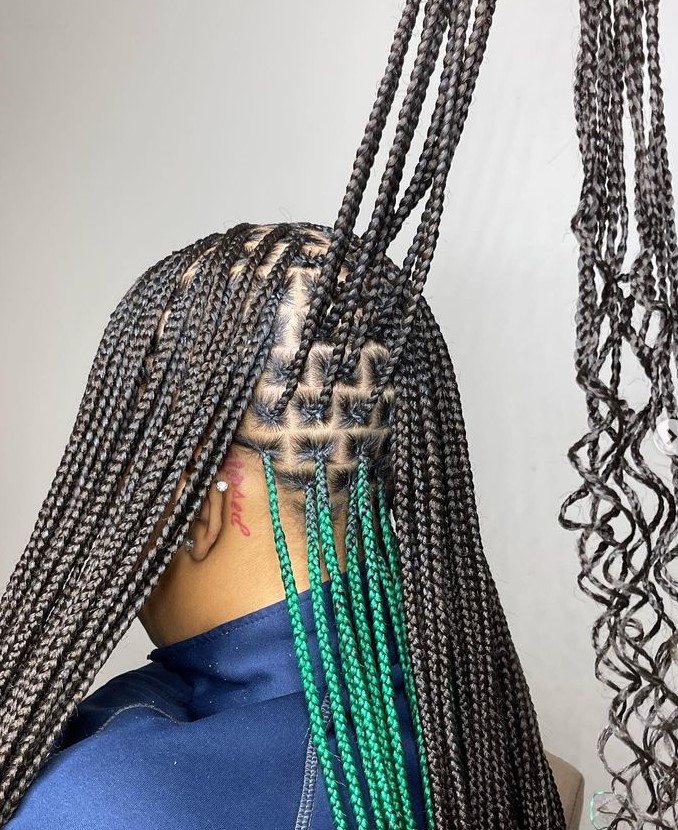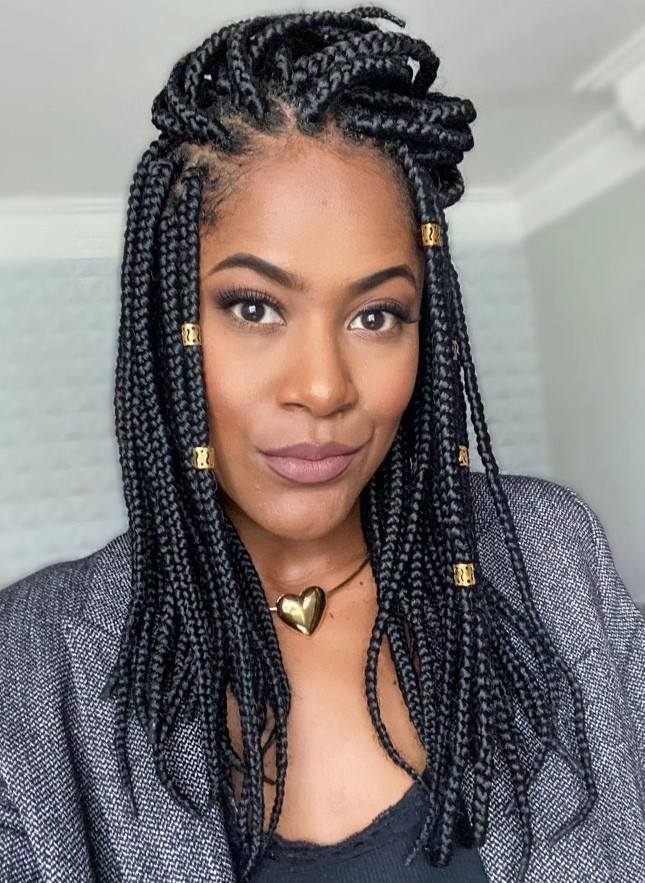Introduction
Understanding the difference between knotless and box braids is crucial to selecting a hairstyle that suits you and the style that you want to achieve. Among various braiding techniques, box braids and knotless braids have gained significant traction over the years. Although they look almost similar to someone who does not have a deep understanding of braiding techniques, these hairstyles have distinct characteristics, advantages, and disadvantages. I have heard some individuals referring to knotless box braids because they do not know the difference between both terms. You have landed on the right article if you are one of those individuals. I’ll delve into the definition of both terms, the key differences between the two, and the pros and cons of each.
What are knotless braids?
As the name suggests, knotless braids do not have a knot at the base. What are knotless braids? With knotless braids, the braider starts with your natural hair and gradually feeds in braid extensions. Knotless braids, as opposed to box braids, provide a more seamless base and flattering finish. They have gained traction in recent years as most individuals prefer them to box braids. You can try various knotless braid styles, including jumbo knotless braids and french curl braids.


Pros
- Aesthetic – Knotless braids are considered to be more aesthetically pleasing because they provide a defined and seamless finish. Unlike box braids, which have a visible knot at one’s hair base, knotless braids seem to have a seamless finish. They thus offer a more structured appearance, and most individuals find them appealing. They have, therefore, become one of the trendiest braiding hair techniques today.
- Reduced tension/discomfort – Since knotless braids start with one’s natural hair while gradually incorporating braid extensions, they lead to less tension on one’s scalp. I prefer knotless braids over box braids for this reason.
- Lightweight – Knotless braids are lighter on the scalp compared to box braids. Sometimes, a knot at the base can make the hairstyle bulky and less comfortable.
Cons
- Potential hair damage – Although still a controversial topic, most individuals often report experiencing hair loss or damage, especially on the hairline, after doing knotless. I do not really understand the science behind knotless braids and hair loss because I would expect that box braids are the ones where an individual would experience hair loss. However, I am just putting it out there because you may experience hair damage.
- Not as durable – Knotless braids are very durable. However, compared to box braids, knotless braids may not last a long time. This is due to the lack of a knot at the base, which makes them prone to frizzing. However, with proper maintenance, knotless braids can last anywhere between 4 to 6 weeks.
What are box braids?
Box braids are a braiding technique that involves a small knot at the base of the braid that attaches to your natural hair. The knot often secures the synthetic hair extensions to your natural hair.
The name “box” itself comes from the fact that, in most instances, box braids involve sectioning your hair into box sections. Box braids go well with various hairstyles, including jumbo braids and Fulani braids.


Pros
- Protective hairstyle – Box braids are a great protective hairstyle. They are very versatile and highly durable.
- Longevity – Box braids can last for about 4-8 weeks with proper maintenance and care. They are thus the best option if you are looking for a long-lasting hairstyle.
- Distinct look – They have a prominent and defined look with a knot at the base that attaches the braiding extensions to your natural hair.
Cons
- Time-consuming installation – On the flip side, however, box braids can be very time-consuming to install and may take the braider approximately 4-8 hours, depending on the length and size of the braids that you want to achieve. Besides, due to the number of hours it takes to braid box braids, they may be a bit pricey.
- Tension on the scalp – The braiding technique requires creating a knot at the base, which can create tension on the scalp. This can lead to pain and discomfort.
- Potential hair damage – if done too tight to create tension on the scalp, box braids can lead to hair breakage and thinning.
Pro Tips for Maintaining Knotless & Box Braids
- Before you embark on braiding knotless/box braids, ensure that your hair and scalp are clean by washing them with your preferred shampoo and conditioner.
- Oil your scalp every single week – This ensures that your scalp and hair remain moisturized.
- Wear a silk bonnet at night to protect your braids from frizz.
- Do keep in your braids for more than eight weeks – Keeping in your braids for too long can lead to hair matting and potential breakage.
Key Takeaways
Therefore, from the article, you’ve learned that “knotless box braids is not a hairstyle, but a distinction between two popular hairstyles. If you are stuck between choosing knotless and box braids, the choice of what you select will depend on your personal preferences and hair type. If you are looking for something that is more aesthetically pleasing but lasts for about 4-6 weeks, then you can choose knotless braids. However, if you are looking for a more durable hairstyle that will last you anywhere between 4-8 weeks, then box braids are the way to go. All in all, both hairstyles are great protective hairstyles for natural hair.
